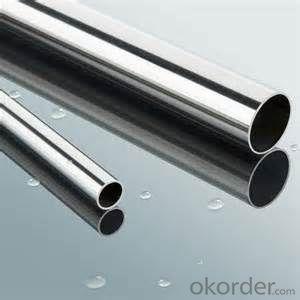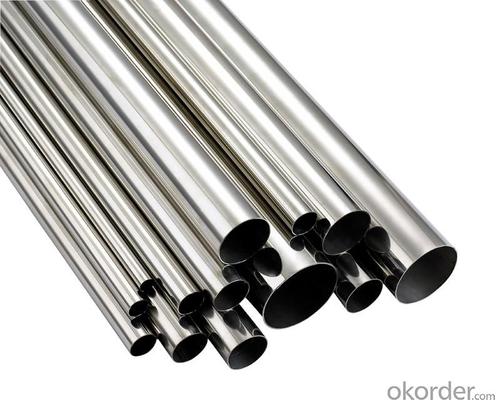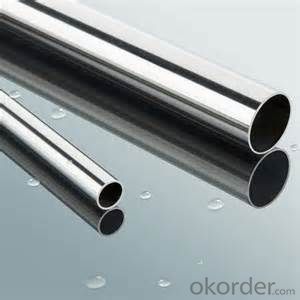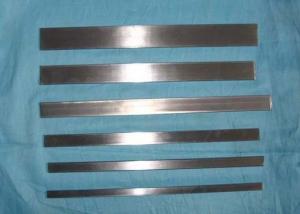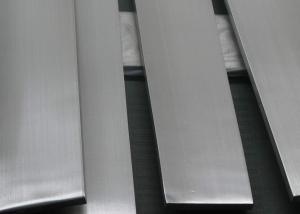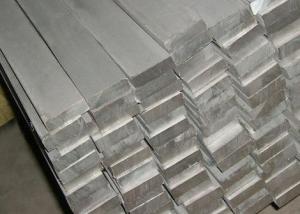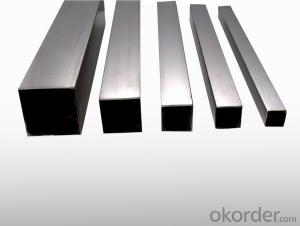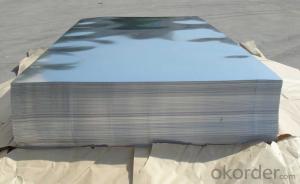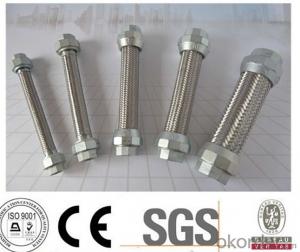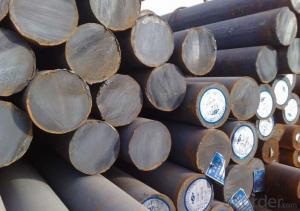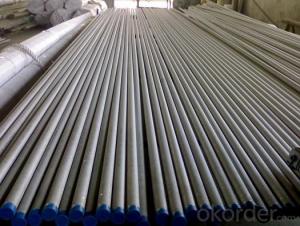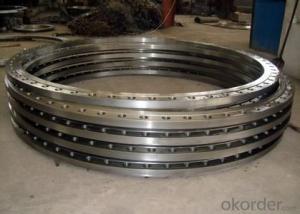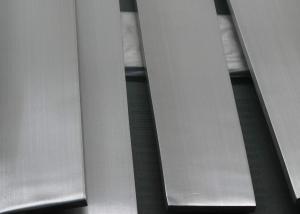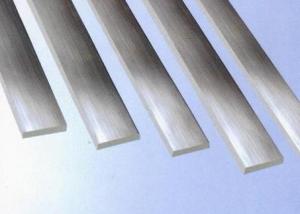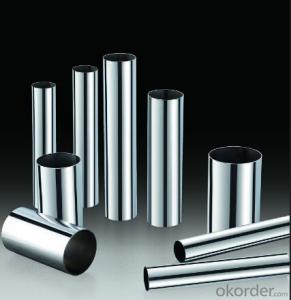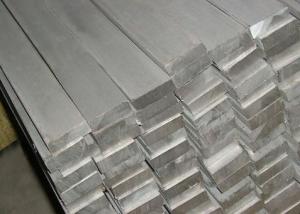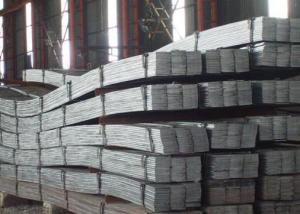STAINLESS STEEL PIPES Material 304 316
- Loading Port:
- China Main Port
- Payment Terms:
- TT OR LC
- Min Order Qty:
- -
- Supply Capability:
- -
OKorder Service Pledge
OKorder Financial Service
You Might Also Like
Description:
Stainless Steel Pipe
Material:
304 321 316 310
Packing:
In bundle
MOQ:
5 TONS
Architecture[edit]
Stainless steel is used for buildings for both practical and aesthetic reasons. Stainless steel was in vogue during the art deco period. The most famous example of this is the upper portion of the Chrysler Building (pictured). Some diners and fast-food restaurants use large ornamental panels and stainless fixtures and furniture. Because of the durability of the material, many of these buildings retain their original appearance.
Type 316 stainless is used on the exterior of both the Petronas Twin Towers and the Jin Mao Building, two of the world's tallest skyscrapers.[17]
The Parliament House of Australia in Canberra has a stainless steel flagpole weighing over 220 tonnes (240 short tons).
The aeration building in the Edmonton Composting Facility, the size of 14 hockey rinks, is the largest stainless steel building in North America.
Bridges[edit]
Cala Galdana Bridge in Minorca (Spain) was the first stainless steel road bridge.
Sant Fruitos Pedestrian Bridge (Catalonia, Spain), arch pedestrian bridge.
Padre Arrupe Bridge (Bilbao, Spain) links the Guggenheim museum to the University of Deusto.[18]
Monuments and sculptures[edit]
The Unisphere, constructed as the theme symbol of the 1964-5 World's Fair in New York City, is constructed of Type 304L stainless steel as a sphere with a diameter of 120 feet, or 36.57 meters.
The Gateway Arch (pictured) is clad entirely in stainless steel: 886 tons (804 metric tonnes) of 0.25 in (6.4 mm) plate, #3 finish, type 304 stainless steel.[19]
The United States Air Force Memorial has an austenitic stainless steel structural skin.
The Atomium in Brussels, Belgium was renovated with stainless-steel cladding in a renovation completed in 2006; previously the spheres and tubes of the structure were clad in aluminium.
The Cloud Gate sculpture by Anish Kapoor, in Chicago US.
The Sibelius monument in Helsinki, Finland, is made entirely of stainless steel tubes.
The Man of Steel (sculpture) under construction in Rotherham, England.
Other[edit]
- Automotive bodies
The Allegheny Ludlum Corporation worked with Ford on various concept cars with stainless steel bodies from the 1930s through the 1970s, as demonstrations of the material's potential. The 1957 and 1958 Cadillac Eldorado Brougham had a stainless steel roof. In 1981 and 1982, the DeLorean DMC-12 production automobile used stainless steel body panels over a glass-reinforced plasticmonocoque. Intercity buses made by Motor Coach Industries are partially made of stainless steel. The aft body panel of the Porsche Cayman model (2-door coupe hatchback) is made of stainless steel. It was discovered during early body prototyping that conventional steel could not be formed without cracking (due to the many curves and angles in that automobile). Thus, Porsche was forced to use stainless steel on the Cayman.
- Passenger rail cars
Rail cars have commonly been manufactured using corrugated stainless steel panels (for additional structural strength). This was particularly popular during the 1960s and 1970s, but has since declined. One notable example was the early Pioneer Zephyr. Notable former manufacturers of stainless steel rolling stock included the Budd Company (USA), which has been licensed to Japan's Tokyu Car Corporation, and the Portuguese company Sorefame. Many railcars in the United States are still manufactured with stainless steel, unlike other countries who have shifted away.
- Aircraft
Budd also built an airplane, the Budd BB-1 Pioneer, of stainless steel tube and sheet, which is on display at the Franklin Institute.
The American Fleetwings Sea Birdamphibious aircraft of 1936 was also built using a spot-welded stainless steel hull.
The Bristol Aeroplane Company built the all-stainless steel Bristol 188 high-speed research aircraft, which first flew in 1963.
The use of stainless steel in mainstream aircraft is hindered by its excessive weight compared to other materials, such as aluminum.
- Jewelry
Valadium, a stainless steel and 12% nickel alloy is used to make class and military rings. Valadium is usually silver-toned, but can be electro-charged to give it a gold tone. The gold tone variety is known as Sun-lite Valadium
- Q: Can stainless steel pipes spray black paint?
- Can. The surface roughening with a thick gauze, do not use ordinary paint intensity difference. With resin paint, paint can be
- Q: What are the different types of stainless steel pipe fittings?
- There are several different types of stainless steel pipe fittings that are commonly used in various piping systems. Some of the most common types include: 1. Stainless Steel Elbows: These fittings are used to change the direction of the pipe by 90 degrees or 45 degrees. They are available in different angles and sizes to suit the specific requirements of the piping system. 2. Stainless Steel Tees: Tees are used to create a branch in the pipeline, allowing the flow of fluid in multiple directions. They have three openings, with one inlet and two outlets. 3. Stainless Steel Couplings: Couplings are used to connect two pipes of the same diameter. They are available in different types, such as full coupling (both ends are threaded), half coupling (only one end is threaded), and reducing coupling (connecting pipes of different diameters). 4. Stainless Steel Reducers: Reducers are used to connect pipes of different diameters. They come in two types: concentric reducers (tapered on both ends) and eccentric reducers (tapered only on one end). 5. Stainless Steel Caps: Caps are used to seal the end of a pipe. They are typically used in applications where the pipe will not be extended further. 6. Stainless Steel Crosses: Crosses are similar to tees but have four openings instead of three. They are used to create a branch in the pipeline with multiple outlets. 7. Stainless Steel Unions: Unions are used to connect two pipes without the need for threading. They provide a convenient way to disassemble and reassemble the pipes for maintenance or repairs. 8. Stainless Steel Nipples: Nipples are short sections of pipe with male threaded ends. They are used to extend a pipe or create a connection between two female threaded fittings. It is important to note that these are just a few examples of the many types of stainless steel pipe fittings available. The specific type of fitting required will depend on the application, pipe size, and other factors.
- Q: Can stainless steel pipes be used for wastewater treatment plants?
- Yes, stainless steel pipes can be used for wastewater treatment plants. Stainless steel is a highly durable and corrosion-resistant material, making it an ideal choice for applications in harsh environments such as wastewater treatment plants. The resistance to corrosion helps to prevent leaks and minimize maintenance, ensuring a longer lifespan for the pipes. Additionally, stainless steel pipes are also hygienic and easy to clean, which is crucial in wastewater treatment plants where cleanliness and sanitation are of utmost importance. Overall, stainless steel pipes are a reliable and efficient option for transporting wastewater in treatment plants.
- Q: Can stainless steel pipes be used for food storage tanks?
- Yes, stainless steel pipes can be used for food storage tanks. Stainless steel is a preferred material for food storage and processing equipment due to its excellent corrosion resistance, durability, and hygiene properties. It is non-reactive, does not leach any harmful substances into the food, and can withstand high temperatures and rigorous cleaning processes. Additionally, stainless steel pipes can be easily cleaned and sanitized, ensuring the maintenance of proper food safety standards. Therefore, stainless steel pipes are commonly used in the construction of food storage tanks to ensure the safety and quality of stored food products.
- Q: How do stainless steel pipes compare to polyvinyl chloride pipes?
- Stainless steel pipes have a higher durability and can withstand higher pressures and temperatures compared to polyvinyl chloride (PVC) pipes. Additionally, stainless steel pipes are resistant to corrosion, making them suitable for a wide range of applications, including in harsh environments. On the other hand, PVC pipes are lightweight, easy to install, and more affordable. However, they are not as durable as stainless steel and have limitations in terms of pressure and temperature resistance. Ultimately, the choice between stainless steel and PVC pipes depends on the specific requirements and conditions of the project.
- Q: What is the maximum operating temperature for stainless steel pipes?
- The maximum operating temperature for stainless steel pipes can vary depending on the grade of stainless steel used. However, in general, stainless steel pipes can typically withstand temperatures up to 1200 degrees Fahrenheit (650 degrees Celsius).
- Q: How do you pressure test stainless steel pipes?
- To pressure test stainless steel pipes, you can use various methods, such as hydrostatic testing or pneumatic testing. Hydrostatic testing involves filling the pipes with water or another suitable liquid and pressurizing them to a specified level using a pump. The pressure is then maintained for a designated period to check for any leaks or failures. Pneumatic testing, on the other hand, involves using compressed air or gas to pressurize the pipes and conducting similar leak detection procedures. It is crucial to follow industry standards, guidelines, and safety measures while performing these tests to ensure the integrity and reliability of the stainless steel pipes.
- Q: How do you clean stainless steel pipes?
- To clean stainless steel pipes, you can start by using a mixture of warm water and mild soap to scrub the surface of the pipes with a soft cloth or sponge. Make sure to rinse well and dry thoroughly to prevent water spots or streaks. For tougher stains or buildup, you can use a stainless steel cleaner or polish specifically designed for this purpose. Always remember to follow the manufacturer's instructions and test any cleaner on a small, inconspicuous area before applying it to the entire pipe.
- Q: What are the common applications for stainless steel pipes?
- Stainless steel pipes have a wide range of applications due to their unique properties and versatility. Some of the common applications for stainless steel pipes include: 1. Plumbing and water supply systems: Stainless steel pipes are commonly used in plumbing and water supply systems due to their corrosion resistance and ability to withstand high pressure. They provide a reliable and long-lasting solution for transporting water and other fluids. 2. Oil and gas industry: Stainless steel pipes are extensively used in the oil and gas industry for transporting oil, gas, and other hydrocarbons. They can withstand high temperatures and pressures, making them suitable for exploration, production, and transportation of these resources. 3. Food and beverage industry: Stainless steel pipes are widely used in the food and beverage industry due to their hygienic properties and resistance to corrosion. They are commonly used for transporting liquids, such as milk, juices, and processed foods, ensuring the safety and quality of the products. 4. Chemical and pharmaceutical industry: Stainless steel pipes are highly resistant to corrosion, making them ideal for the chemical and pharmaceutical industry. They are used for transporting various chemicals, acids, and solvents, ensuring the integrity of the substances being transported. 5. Construction and architecture: Stainless steel pipes are used in construction and architectural applications due to their aesthetic appeal and structural strength. They are often used for handrails, balustrades, structural columns, and decorative applications, adding a modern and sleek look to buildings. 6. Automotive industry: Stainless steel pipes are utilized in the automotive industry for exhaust systems due to their heat resistance and durability. They can withstand high temperatures and corrosive gases, ensuring the efficient operation of the exhaust system. 7. Power generation: Stainless steel pipes are used in power plants for transporting steam, water, and other fluids. They are resistant to high temperatures and pressures, making them suitable for power generation applications. 8. Aerospace industry: Stainless steel pipes are utilized in the aerospace industry for various applications, including aircraft exhaust systems, hydraulic systems, and fuel lines. They offer high strength-to-weight ratio, corrosion resistance, and reliability, meeting the stringent requirements of the aerospace industry. In summary, stainless steel pipes find applications in various industries due to their corrosion resistance, durability, and versatility. They are used in plumbing, oil and gas, food and beverage, chemical and pharmaceutical, construction, automotive, power generation, and aerospace industries, among others.
- Q: How do you calculate the flow rate in stainless steel pipes?
- To calculate the flow rate in stainless steel pipes, you can use the principles of fluid dynamics and the properties of the fluid flowing through the pipe. There are several factors that should be taken into consideration: 1. Determine the diameter of the pipe: The diameter of the pipe will affect the flow rate since a larger diameter allows for a greater volume of fluid to pass through. 2. Determine the viscosity of the fluid: Viscosity refers to the resistance of a fluid to flow. Fluids with higher viscosity will flow more slowly, while fluids with lower viscosity will flow more quickly. 3. Calculate the pressure drop: The pressure drop across the pipe is an important factor in determining the flow rate. This can be calculated using pressure measurements at different points along the pipe. 4. Use the Reynolds number: The Reynolds number is a dimensionless quantity that combines the fluid velocity, density, viscosity, and pipe diameter. It helps determine whether the flow is laminar (smooth) or turbulent (chaotic). There are different equations to calculate the Reynolds number depending on the flow regime. 5. Apply the appropriate flow equation: Depending on the flow regime, you can use different equations to calculate the flow rate. For laminar flow, the Hagen-Poiseuille equation can be used. For turbulent flow, the Darcy-Weisbach equation or the Manning equation can be used. By considering these factors and applying the appropriate equations, you can calculate the flow rate in stainless steel pipes. It is important to note that these calculations provide an estimate and may not be exact due to various factors such as pipe roughness, fittings, and other obstructions in the pipe. Therefore, it is recommended to consult with a fluid dynamics expert or use specialized software for accurate calculations.
Send your message to us
STAINLESS STEEL PIPES Material 304 316
- Loading Port:
- China Main Port
- Payment Terms:
- TT OR LC
- Min Order Qty:
- -
- Supply Capability:
- -
OKorder Service Pledge
OKorder Financial Service
Similar products
Hot products
Hot Searches
Related keywords

